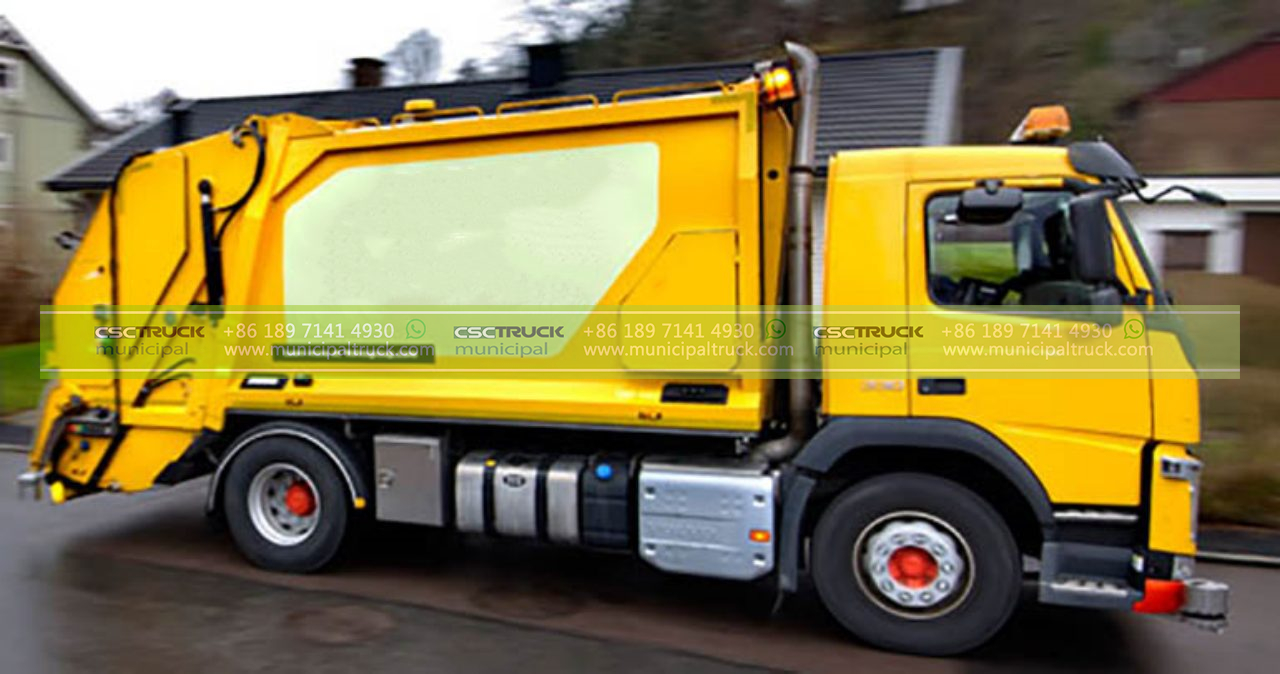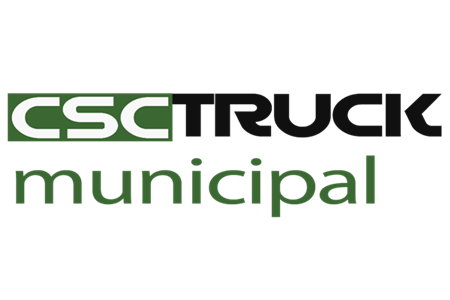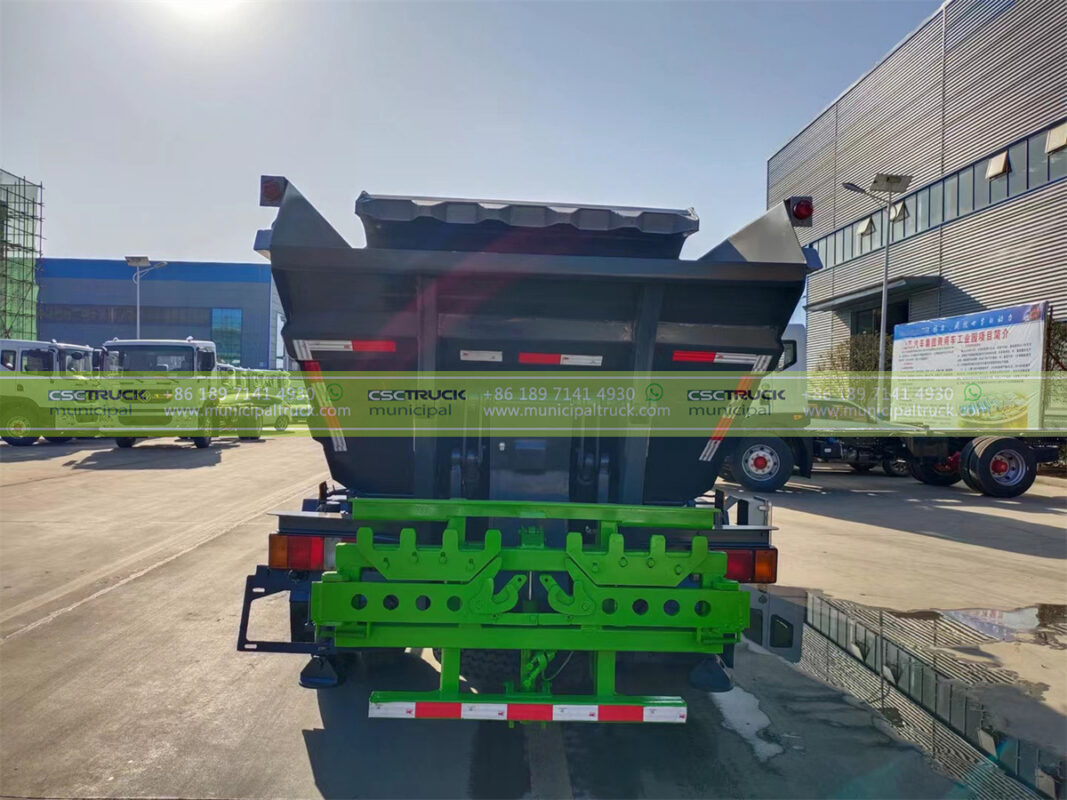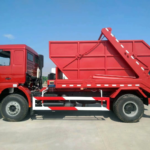In the ever-evolving landscape of waste management, self-tipping garbage trucks have emerged as a groundbreaking solution designed to alleviate the physical strain associated with traditional waste collection methods while enhancing operational efficiency. By integrating advanced engineering and automation, these vehicles significantly reduce manual labor requirements, streamline the waste disposal process, and ultimately contribute to more sustainable urban environments. This article explores the mechanics, advantages, operational features, and future prospects of self-tipping garbage trucks in modern waste management.
The Mechanics of Self-Tipping Garbage Trucks
Innovative Tipping Mechanism
At the heart of self-tipping garbage trucks lies an innovative tipping mechanism that allows the truck’s cargo compartment to elevate and dump its contents with minimal human intervention. This mechanism typically utilizes hydraulic systems, which provide the necessary force to lift the truck’s bed and release its load into designated disposal sites, such as landfills or recycling facilities. By automating the tipping process, operators can efficiently offload waste without the need for manual lifting or cumbersome unloading procedures.
Design and Construction
Self-tipping garbage trucks are designed with a robust structure that can withstand the rigors of daily waste collection. The cargo compartment is often constructed from high-strength steel or composite materials, ensuring durability and resistance to wear and tear. The hydraulic system that powers the tipping mechanism is engineered for reliability, featuring reinforced hoses and components that can endure the heavy loads typically associated with waste disposal. This careful design consideration enhances the longevity of the vehicle while ensuring safe and effective operations.
Advantages of Self-Tipping Garbage Trucks
Reduced Manual Labor
One of the most significant advantages of self-tipping garbage trucks is their ability to reduce the physical demands placed on waste management personnel. Traditional waste collection methods often require workers to manually lift and empty heavy bins into the truck, which can lead to physical strain and increased injury risk. By employing self-tipping technology, the manual handling of waste is minimized, allowing operators to focus on driving and monitoring the collection process. This reduction in manual labor not only improves worker safety but also enhances overall job satisfaction.
Increased Efficiency and Productivity
Self-tipping garbage trucks significantly enhance operational efficiency and productivity within waste management systems. With the ability to quickly and effectively offload waste at disposal sites, these trucks can complete routes more swiftly, thereby increasing the volume of waste collected per shift. This efficiency translates to reduced operational costs, as municipalities and waste management companies can optimize their fleet utilization and minimize labor hours. As a result, self-tipping trucks contribute to more sustainable waste management practices, enabling cities to handle increasing waste volumes without compromising service quality.
Enhanced Safety Features
Safety is a paramount concern in waste management operations, and self-tipping garbage trucks are equipped with various features designed to protect both operators and the public. The hydraulic tipping mechanism is designed with safety valves and controls that prevent accidental discharges and ensure that the load is released only when the truck is in the appropriate position. Additionally, many self-tipping trucks include enhanced visibility features, such as cameras and sensors, that aid operators in navigating urban environments and monitoring their surroundings during collection.
Operational Features of Self-Tipping Garbage Trucks
User-Friendly Controls
The control systems of self-tipping garbage trucks are engineered for user-friendliness, enabling operators to easily manage the tipping process from the driver’s seat. Advanced models may incorporate electronic controls that allow for precise operation of the hydraulic system, ensuring smooth and efficient load unloading. These controls can be designed to minimize the learning curve for new operators, facilitating training and reducing the likelihood of operational errors.
Versatility in Waste Collection
Self-tipping garbage trucks are versatile vehicles capable of handling various types of waste, including household refuse, recyclables, and construction debris. Their design accommodates a range of container sizes, making them suitable for residential, commercial, and industrial applications. This versatility allows municipalities and waste management companies to utilize self-tipping trucks across multiple waste streams, optimizing their fleets for diverse collection needs.
Integration with Smart Technologies
As the waste management industry increasingly embraces smart technologies, self-tipping garbage trucks are being equipped with advanced features such as GPS tracking and route optimization software. These technologies enable operators to monitor truck locations in real-time, allowing for efficient route planning and effective resource allocation. By utilizing data analytics, waste management teams can identify trends, optimize collection schedules, and improve service delivery, ultimately leading to a more streamlined waste management process.
Environmental Impact of Self-Tipping Garbage Trucks
Waste Reduction and Recycling Efforts
Self-tipping garbage trucks contribute to more efficient waste collection processes, which can support recycling and waste reduction initiatives. By enabling quicker collection and offloading of recyclables, these trucks can help municipalities achieve their recycling targets and reduce the volume of waste sent to landfills. Enhanced efficiency in waste collection also facilitates the implementation of more frequent recycling pickups, promoting sustainable practices within communities.
Lower Carbon Footprint
By improving operational efficiency, self-tipping garbage trucks help to lower the carbon footprint associated with waste collection. Reduced idle time and optimized routes lead to decreased fuel consumption and emissions, contributing to a more environmentally friendly waste management solution. Additionally, the ability to handle larger volumes of waste with fewer vehicles can further mitigate the environmental impact of waste collection operations, aligning with broader sustainability goals.

Challenges and Considerations
Initial Investment Costs
While self-tipping garbage trucks offer numerous advantages, potential buyers must consider the initial investment costs associated with acquiring this specialized equipment. Although the long-term savings related to reduced labor and increased efficiency may offset these costs, municipalities must evaluate their budgets and funding sources to ensure that they can make the necessary investment in self-tipping technology.
Maintenance and Repair Considerations
The hydraulic systems that power the tipping mechanisms in self-tipping garbage trucks require regular maintenance to ensure optimal performance and safety. Operators and waste management companies must establish comprehensive maintenance schedules and protocols to address potential wear and tear, as well as to inspect hydraulic components regularly. This proactive approach to maintenance can help extend the lifespan of the vehicles and minimize downtime due to repairs.
Training and Operational Adjustments
Transitioning to self-tipping garbage trucks may require training for waste management staff and adjustments to existing operational procedures. Operators must become familiar with the unique features and functionalities of self-tipping technology to maximize efficiency and ensure safety during collection. Additionally, waste management teams may need to adapt their maintenance schedules and protocols to fully leverage the capabilities of these vehicles.
Case Studies of Successful Implementations
Urban Areas Adopting Self-Tipping Technology
Cities around the world are increasingly adopting self-tipping garbage trucks as part of their waste management strategies. For example, several municipalities have reported significant improvements in operational efficiency and reductions in workplace injuries after integrating self-tipping technology into their fleets. These cities have demonstrated that it is possible to enhance service delivery while prioritizing worker safety and satisfaction.
Successful Outcomes in Waste Management
Self-tipping garbage trucks have also proven effective in waste management applications, where the collection of litter and debris is essential for maintaining public spaces. In various case studies, municipalities have observed decreased litter levels and improved community satisfaction after integrating self-tipping trucks into their waste management programs. The ability to operate with minimal manual intervention allows waste management teams to focus on other critical tasks, such as community engagement and educational outreach regarding waste reduction.
Future Trends and Innovations
Advancements in Automation
As technology continues to advance, the future of self-tipping garbage trucks looks promising, with ongoing innovations poised to enhance their capabilities even further. Future models may incorporate autonomous driving technology, allowing these trucks to navigate urban environments without direct human intervention. This evolution could revolutionize waste management, enabling even greater efficiency and safety in operations.
Sustainable Material Utilization
With a growing emphasis on sustainability, manufacturers of self-tipping garbage trucks are exploring the use of eco-friendly materials in their construction. Lightweight and durable materials can enhance fuel efficiency while reducing the environmental impact of manufacturing processes. Additionally, integrating renewable energy sources, such as solar panels, into the design of these trucks could further minimize their carbon footprint and contribute to greener waste management practices.
Customization for Specific Applications
The future of self-tipping garbage trucks may also involve increased customization options to cater to specific waste management needs. Manufacturers may develop specialized models designed for particular waste streams, such as organic waste or hazardous materials, allowing municipalities to address unique challenges in their waste management systems. This adaptability could enhance the effectiveness of self-tipping trucks across diverse applications, solidifying their role in modern waste management practices.
In summary, self-tipping garbage trucks are transforming the waste management landscape by significantly reducing manual labor, enhancing operational efficiency, and promoting sustainable practices. As technology continues to evolve, these innovative vehicles are likely to play an even more integral role in shaping the future of waste collection and disposal. Their potential to streamline operations, improve worker safety, and reduce environmental impact positions them as vital assets in the pursuit of cleaner, more sustainable urban environments.







